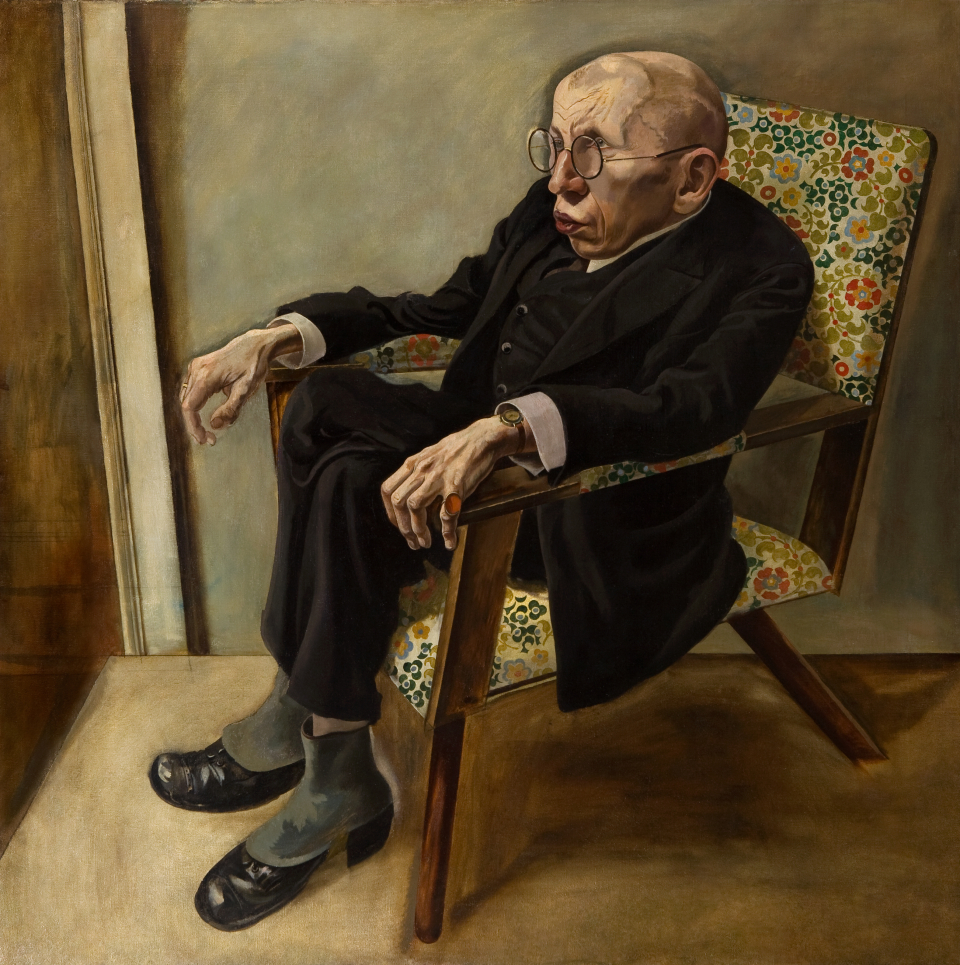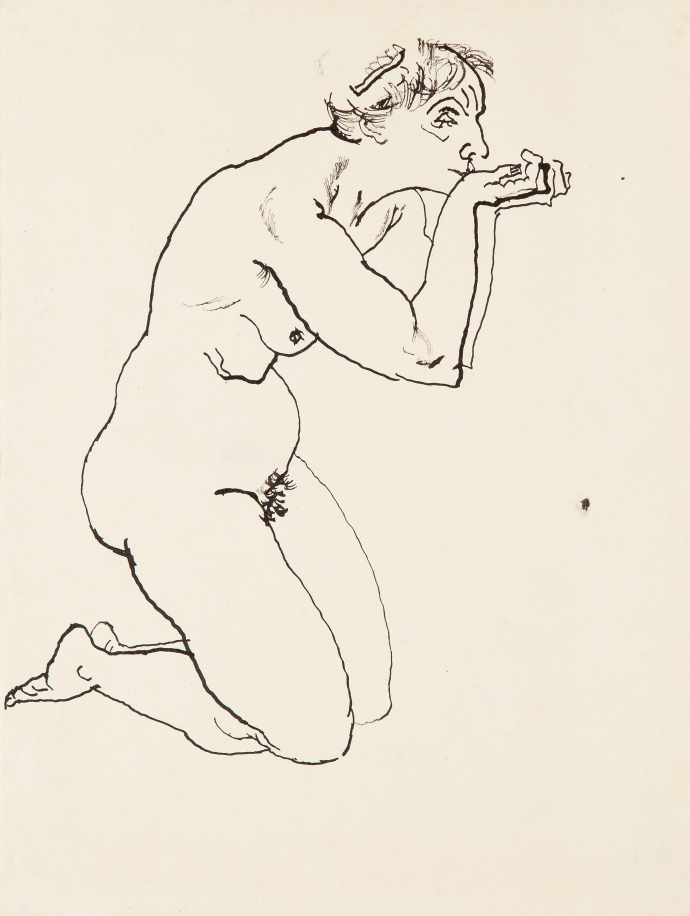Kunsthalle Mannheim / Cem Yücetas
)Porträt des Schriftstellers Max Herrmann-Neiße
Jugendstil-Bau > Ebene 1 > Galerie 10
Intro
In this portrait, George Grosz depicts the writer Max Herrmann-Neisse (1886–1941), who with his Expressionist texts, and later also his New Objectivist writings, was one of the most important authors in the Berlin of the 1920s. The two artists were united by a close friendship, were considered bohemians, cultivating a dandyish lifestyle, and expressed biting social critique in their works. “We were both lyricists and cynics, respectable and anarchistic!” stated Hermann-Neisse. Numerous pencil studies preceded the work, painted in 1925, in which Grosz portrays the poet as if he is seated on a stage.
Herrmann-Neisse appears to be slumped in on himself and melancholy, simultaneously distant and attentively observing. Grosz does not flatter the sitter, presenting the short-statured man afflicted with a hump in an unfiltered realism. At the same time, however, he emphasizes his friend’s intellect, depicting his oversize head in great detail, but also the expressive hands—tools of both the writer and the artist. Grosz’s penetrating likeness of Herrmann-Neisse is one of the high points of his portraiture, as well as of New Objectivist painting.
Background
The Expressionist lyric poet and writer Max Herrmann-Neisse (1886–1941) was regarded as one of the best-known men of letters of his time, not only for his avant-garde texts. His remarkable appearance also contributed to the fact that he was much in demand as a model for artists such George Grosz, Ernst Ludwig Meidner (1884–1966) and Oskar Kokoschka (1886–1980).
Compared with Grosz’s portrait of Neisse, created in 1927 and now in the possession of the Museum of Modern Art in New York, the Mannheim version depicts the writer in a considerably more ruthless and provocative manner: On the disproportionately large, bald head sit round spectacles, behind which his introspective but alert eyes sparkle. The small, hunchbacked figure is encased in a bourgeois three-piece suit and shoes with gaiters, while he sits hunched up in a brightly flowered chair, which contradicts his misshapen appearance even more.
In this portrait, the artist has captured the entire contradiction between the anarchic-cynical poet and his fragile, deformed body. During the year of its creation, the portrait was one of the most grotesque works on view in the Mannheim exhibition New Objectivity, in which post-Expressionist painting was presented on a large scale for the first time. Twelve years later, Grosz’s work was on display in the Munich exhibition Degenerate Art. Both Grosz and Herrmann-Neisse were among the artists who were indicted and then banned, and who had already left Germany in 1937: Grosz immigrated to the United States, while the poet took refuge in exile in Switzerland and England.
Kunsthalle Mannheim


